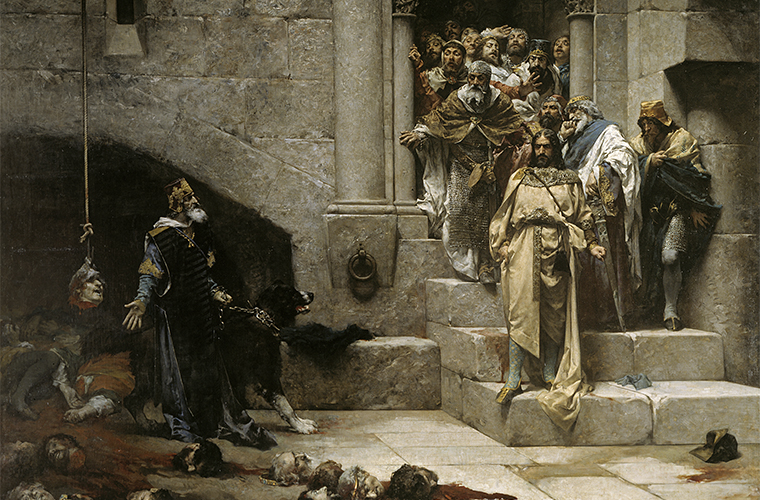The legend of the Huesca bell

If you want to know one of the most fascinating legends of Aragon and its capital city, you have to read a little bit of "The legend of the Bell of Huesca".. This story remains to this day one of the most curious and interesting events that have taken place in Huesca.
At the time of his death Alfonso Iknown as the Battler of Aragon and leaving no children, in the year 1134, his brother Ramiro IIAs a monk, he inherited the Kingdom of Aragon in its entirety. At that time a somewhat unsettled period was being witnessed, both internally and externally in the city. Ramiro II was quite concerned about the attitude of some of his nobles, which was not correct, and for this reason he ordered them to appear before him. The excuse he gave them was that he was going to build a huge, gigantic bell of such a size that it would be heard throughout the kingdom of Aragon, but instead of telling and talking about it, he had the heads of the nobles, who in his opinion were the most guilty, cut off as soon as they came forward. They were all beheaded one by one, as they entered the hall separately.
Nowadays, legend has it that the Provincial Museum of the city of Huesca, located in the Old Quarter and very close to the Cathedral, is the exact place where they were beheaded. In total, twelve nobles of King Ramiro, were killed, their heads were cut off, and they were put in a circle.. In the centre of the circle, the head of the bishop of the city of Huesca was hung. And after that, King Ramiro II invited all the people to witness the scene so that they could learn from the mistakes of the dead nobles, and not fall into them.
They exist, multiple representations in paintingsThe legend of Huesca, as well as being present in several literary stories, there is a painting, by the painter José Casado de Alisalwhich has become the artistic icon that best represents the history of the Huesca Bell. This work was painted in the 19th century and can currently be seen in the Huesca Town Hall.
FOLLOW US: TRAVESÍA PIRENAICA is on Facebook
Don't miss any adventure in the Pyrenees!
